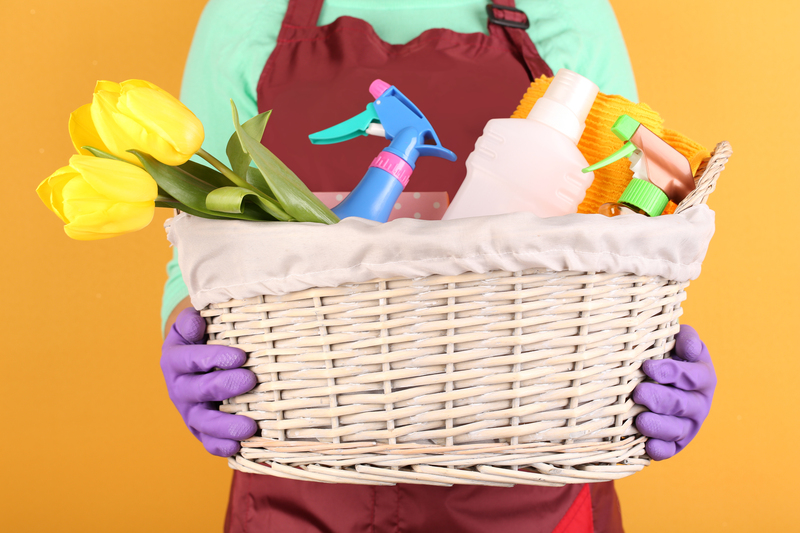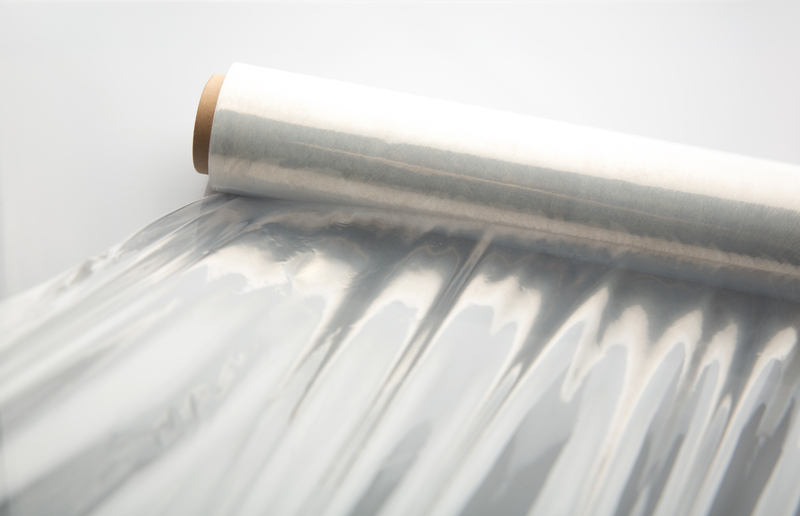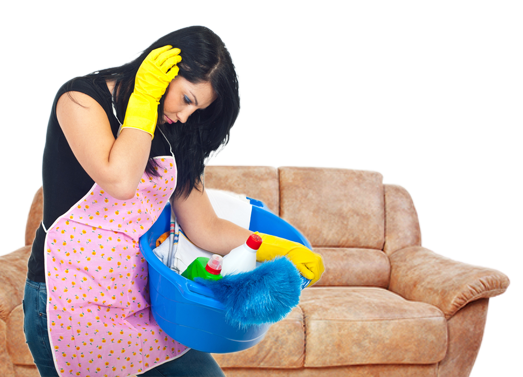How to Safeguard the Fabric When Washing Velvet Curtains
Posted on 25/09/2025
How to Safeguard the Fabric When Washing Velvet Curtains
Are you wondering how to safeguard the fabric when washing velvet curtains? Velvet is a luxurious and elegant material, but it requires special care to maintain its texture, sheen, and shape. Mishandling velvet curtains during cleaning can lead to disastrous results: crushed pile, water stains, color fading, or even shrinkage. Whether you've invested in silk velvet, cotton velvet, or synthetic velvets, this comprehensive guide will help you preserve their beauty and lifespan.
Understanding Velvet Fabric: Why Special Care Matters
_Velvet_ is known for its rich texture and visually stunning appearance. What sets velvet apart is its dense pile--tiny loops of threads standing upright on the base fabric. While velvet curtains add a touch of glamor and sophistication to any interior, this unique structure makes them more susceptible to damage during cleaning.
- Pile Damage: Excessive agitation, improper detergents, or even excess water can crush or flatten the delicate fibers.
- Water Marks: Velvet is prone to marking if water or cleaning solution isn't evenly distributed or completely removed.
- Color Fading: Harsh chemicals and sunlight exposure can lead to dull, faded fabric.
- Shrinkage: Inappropriate washing temperatures can cause velvet curtains to shrink and lose shape.
Protecting velvet curtains during washing is not just about cleanliness, but about preserving their elegance and lifespan.

Checking Care Labels and Fabric Type
Before diving into washing your velvet drapes, always inspect the care label. Curtain manufacturers provide cleaning recommendations based on the composition of the velvet:
- Pure Silk Velvet: Usually requires professional dry cleaning only.
- Cotton Velvet: Sometimes allows gentle hand washing or delicate machine wash, but often still recommends dry cleaning.
- Synthetic Velvet (Polyester/Crushed Velvet): More robust--often machine washable, but always confirm on the label.
If the care instructions state "dry clean only", resist the urge to wash them at home! Inappropriate washing can permanently damage the fabric.
Spot Test for Colorfastness
Before cleaning colored velvet, test a small, inconspicuous area to ensure dyes will not bleed. Use a damp white cloth and lightly press it on the fabric. If any color transfers, only dry cleaning is safe.
Step-by-Step: Safeguarding Fabric While Washing Velvet Curtains
1. Pre-Cleaning Preparation
- Remove dust and debris: Use a soft-bristled brush or handheld vacuum (with upholstery attachment) to gently lift surface dust and pet hair before washing. This prevents embedded grime during cleaning.
- Detach all hardware: Take down curtain hooks, rings, or rods to avoid snagging and tearing.
2. Deciding Between Hand Wash, Machine Wash, or Dry Clean
Your washing method depends entirely on the velvet type and manufacturer recommendations:
- Silk Velvet Curtains: Absolutely dry clean only. Attempting to hand or machine wash can lead to irreversible fabric distortion and dye loss.
- Cotton and Synthetic Velvets: If the label allows, opt for gentle hand washing or a very gentle machine wash with cold water. Always err on the side of caution!
3. Hand Washing Velvet Curtains
- Fill a clean bathtub or large basin with cold or lukewarm water. Never use hot water, as it can cause shrinkage.
- Add mild detergent: Use a gentle, non-alkaline laundry soap, such as those formulated for delicates or woolens. Avoid bleach and harsh chemicals at all costs.
- Submerge one curtain at a time: Gently swirl the curtain in the soapy water. Do not wring, twist, or scrub, as this can damage the pile.
- Rinse thoroughly: Carefully drain the soapy water and refill with fresh water several times until all detergent is removed. Any soap residue can lead to stiffness and pile matting.
4. Machine Washing Velvet Curtains
If hand washing isn't practical and the care label says it's safe, follow these guidelines:
- Use a mesh laundry bag: Place each curtain into a large mesh bag to reduce friction and snagging.
- Select the delicate or hand-wash cycle: Always choose cold water and the slowest spin speed.
- Opt for gentle detergents: Stick to specialized cleaners for delicate fabrics.
- Do not overload the washer: Wash velvet curtains one at a time for best results.
5. Removing Excess Water Without Damage
After washing, handle the velvet with care:
- Never wring or twist the fabric: This is critical. Instead, lay the curtain flat on a clean towel, roll it up, and gently press out excess water.
- Support the weight: Wet velvet is heavy and fragile; always support its weight evenly when moving it to a drying area.
How to Dry Velvet Curtains Safely
Proper drying is crucial when safeguarding the fabric of velvet curtains. Incorrect drying can ruin the shape and finish:
- Never put velvet in the tumble dryer. The heat and tumbling motion can shrink, crush, or permanently ruin the pile.
- Hang to air dry: Use a sturdy rod or flat surface to support the curtains' entire length. Smooth out wrinkles gently with your hands, preserving the nap direction.
- Avoid direct sunlight: UV rays can fade colors and dry out delicate fibers. Always dry in a shaded, well-ventilated area.
- Reposition regularly: Gently shake and reposition during drying to prevent water marks and pile flattening.
Restoring the Velvet Pile After Washing
Once completely dry, velvet sometimes looks crushed or flattened. Here's how to revive it:
- Steam gently: Hold a handheld steamer a few inches from the fabric, allowing the steam to lift the pile. Do not touch the fabric directly with the iron or steamer plate, as this can leave imprints or scorch marks.
- Use a velvet brush: Gently brush the nap in its natural direction to restore texture and shine.
Expert Tips for Maintaining Velvet Curtains' Like-New Appearance
Regular Maintenance
- Use a lint roller or soft brush: Remove dust and debris every few weeks to minimize deep cleaning needs.
- Vacuum gently: Use a low suction setting and always vacuum in the direction of the nap.
- Avoid frequent washing: Velvet is best washed as infrequently as possible. Regular maintenance often negates the need for frequent full cleaning.
Treating Stains on Velvet Curtains
Accidents happen, but stains on velvet require special handling:
- Blot immediately: Use a soft, absorbent cloth to dab up spills. Never rub, as this forces liquid deeper into fibers and may flatten the nap.
- Spot treat gently: Use minimal water and a mild detergent, dabbing (not soaking) the spot with a clean, wet cloth. Dry with a fan or hair dryer on a cool setting, and gently lift the pile with a soft brush once dry.
- Avoid using common stain removers: Many contain chemicals too harsh for velvet and may cause discoloration or matting.
Professional vs. At-Home Velvet Cleaning
- Dry Cleaning: For expensive, antique, or silk velvet curtains, always choose a professional service. They have the expertise and equipment necessary to safeguard velvet fabric.
- DIY Cleaning: Acceptable only for labeled washable cotton or synthetic velvet. Always conduct a spot test before full washing.
Common Mistakes to Avoid When Washing Velvet Curtains
To properly safeguard the fabric when washing velvet curtains, steer clear of these common pitfalls:
- Ignoring the care label: If the label says "dry clean only," do not risk at-home washing.
- Using hot water or high heat: Guarantees shrinkage and damage.
- Wringing or twisting: Causes irreversible pile damage and distortion.
- Overloading the washer: Increases friction, leading to more wear and potential tears.
- Excess use of detergent: Makes rinsing difficult, resulting in stiff or dull fabric.

FAQs: Velvet Curtain Cleaning and Fabric Protection
-
Q: Can I iron velvet curtains?
A: Never iron directly on velvet! If absolutely necessary, steam from a distance or use a velvet board for pressing. Direct heat will crush and damage fibers. -
Q: How often should I wash velvet curtains?
A: Only when absolutely necessary (e.g., once every 1-3 years). Frequent washing shortens velvet's lifespan. -
Q: Are home dry cleaning kits safe for velvet curtains?
A: Not recommended. These kits are formulated for some delicate fabrics, but the agitation and heat used can harm velvet. -
Q: What's the best way to store velvet curtains?
A: Ensure curtains are completely clean and dry before folding in tissue paper and storing in a breathable cotton bag away from direct sunlight and moisture.
Conclusion: Preserving Velvet Curtains for Years to Come
In summary, safeguarding the fabric when washing velvet curtains requires attention to detail, the right cleaning method, and an understanding of velvet's delicate weave. By following the care instructions, choosing gentle cleaning techniques, and keeping the pile smooth and lustrous, you can ensure that your velvet curtains stay stunning for years. Handle with respect, clean with care, and always air on the side of caution. With these best practices, your velvet drapes will continue to add a timeless and opulent flair to your living spaces.
Quick Reference: How to Safeguard Velvet Curtain Fabric
- Check the care label and test for colorfastness.
- Remove dust before washing.
- Hand wash or use washer only if labeled as safe.
- Use cold water and mild detergents.
- Never wring or twist the fabric.
- Air dry out of sunlight and restore nap with steam or a brush.
Choose the right cleaning strategy, and your velvet curtains will reward you with unmatched beauty and durability.





